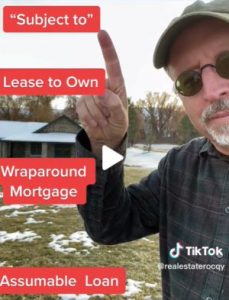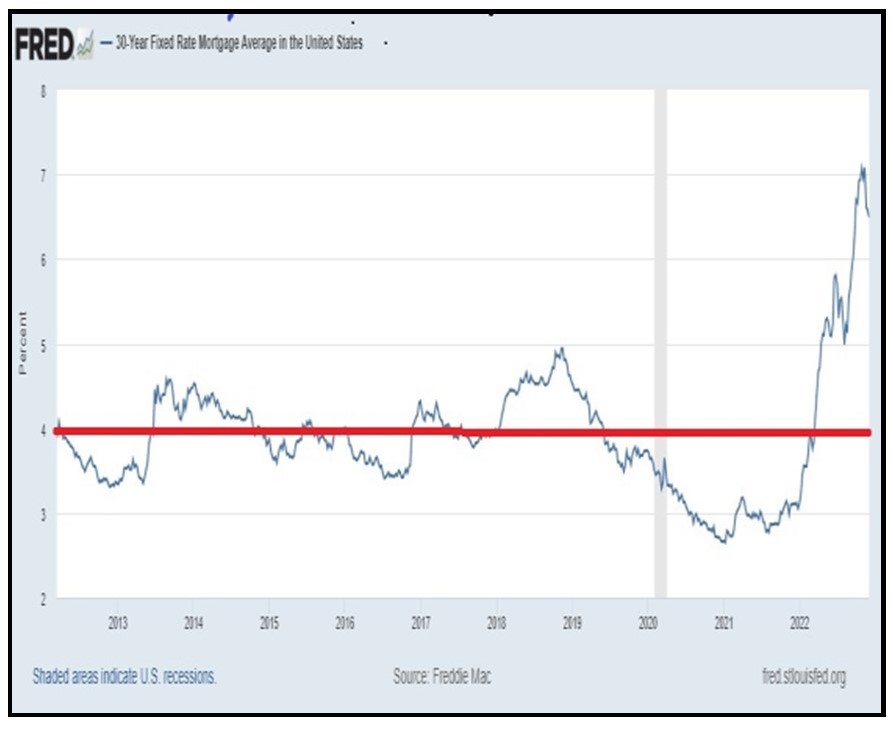So we’ve got all these outstanding low-interest mortgage loans. Many thousands of homeowners in Denver alone have secured rates between 2.5 and 4 percent. Some such loans are now 10 years old.
Meanwhile, with new home loans offered between 6 and 7 percent, nostalgic buyers long for the days of more affordable financing. It’s especially aggravating with list prices finally dropping a bit.
Many of those lucky low-interest borrowers, of course, would love to sell. I mean life goes on, right? There are job transfers, newborn babies, divorces, deaths in the family, etc.
But darned if they’re going to walk away from their sweet 3 percent loans. Not without some horse trading. Particularly if they’ll need to finance a new purchase at something more like 7 percent.
So the sellers are dug in, loving their low monthly payments but perplexed about what to do next. And the frustrated buyers are stuck in their parents’ basements.
For godsake, shouldn’t there be a solution; a logical way to hook these people up?

Out of the Box
Well, yes. In fact, there are many “creative finance” solutions to help buyers and sellers to take advantage of all that cheap money. That is, if they’re willing to open their minds and think differently.
First a simple one: Assumable loans. Written into the terms of some loans is a provision saying the present borrower may transfer the loan—along with the monthly payment amount and paydown schedule—to a qualified new borrower.
Assumption terms are “built-in” to many VA and FHA loans backed by the Veterans Administration or Federal Housing Administration. But there is a big potential hurdle: Suppose the existing borrower has paid down the principal by say, $100,000. And suppose the home value has increased by $150,000. To buy at market value, the new borrower will need to bring in an extra $250,000—either in cash or from a costly second-position loan.
Here’s another strategy, generally called “seller financing” (or owner financing). Suppose a hopeful homebuyer can’t get a bank loan. As an alternative, the SELLER can finance the purchase as if he or she were the bank. Rather than accepting a big check at closing, the seller receives a promissory note. The buyer promises to make regular payments for a certain period of time. Typically, it’s not 30 years; more commonly it’s 5 or 10. Often there is a big “balloon payment” at the end of the term.
The buyer can throw in extra cash to help make it happen. All the moving parts—that down payment, the interest rate, and the life of the loan—are negotiable. Terms can be customized to suit both sides. So the buyer who couldn’t get a bank loan may find acceptable terms this way. And there is no government protocol like completing a Uniform Residential Loan Application. Private financing is a private matter.
That’s a Wrap
Suppose you own a home free and clear. I offer to purchase it with seller financing, proposing to make monthly payments to you. You like the concept. You like the price. You like the tax-saving effect of spreading your sale proceeds over several years.
But you have one big concern. What if I don’t pay?
Well, I’m glad you asked. I’m gonna write up this little thing we call a mortgage. (In Colorado it’s called a Deed of Trust; functionally it’s the same thing.) This document says if I don’t pay, you can foreclose. You can take the house back in a foreclosure, just like the big boys at Wells Fargo.
Complicated? A little. Unmanageable? No. A real estate attorney can run a foreclosure for a few thousand dollars.
Things get more involved when the soon-to-be-sold house is encumbered with a loan. The solution may be a wraparound mortgage, or a “wrap.” That’s where I the buyer (and my attorney) create a new instrument promising to make monthly payments to you; or to your lender, or to some combination of the two.
To a homeowner/seller who is currently financed at 3 percent, the income from a new 5 percent note may look pretty good. To a buyer whose alternative is a 7 percent bank loan, 5 percent financing may be quite attractive as well.
To both sides, creative finance strategies come with new risks, too complex to get into here. They have been part of the playbooks of real estate investors for years. With interest rates rising, one wonders, will they expand more broadly into owner-occupant deals?
Creative is Good
I was in real estate school 12 years ago. In class, I once spoke favorably about “creative” techniques like the above. My instructor, a conservative attorney, quickly shut me down, saying they were tools of scammers and fraud.
Yes, unconventional financing is vulnerable to exploitation by shady players. But I say don’t conflate creative finance with the misuse of it. That’s like disparaging creativity itself.
–Other out-of-the-box techniques include:
— “Subject to” agreements where the deed moves to the buyer, but the debt remains in the seller’s name. The buyer promises to step in and make the monthly loan payments.
— Lease-to-own agreements, where a rental tenant secures an option to buy in the future. (Alternatively, it’s not an option—the tenant is under contract to buy.)
— Land contracts that work like a car loan. The buyer gets the deed when all the payments are made.
These devices are potential problem solvers, with hazards. Approach with caution, with the counsel of a specialized real estate attorney, and sometimes, with a savvy real estate agent.
###

